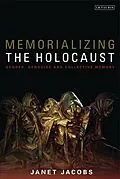How do collective memories of histories of violence and trauma in war and genocide come to be created? Janet Jacobs offers new understandings of this crucial issue in her examination of the representation of gender in the memorial culture of Holocaust monuments and museums, from synagogue memorials and other historical places of Jewish life, to the geographies of Auschwitz, Majdanek and Ravensbruck. Jacobs travelled to Holocaust sites across Europe to explore representations of women. She reveals how these memorial cultures construct masculinity and femininity, as well as the Holocaust's effect on stereotyping on grounds of race or gender. She also uncovers the wider ways in which images of violence against women have become universal symbols of mass trauma and genocide. This feminist analysis of Holocaust memorialization brings together gender and collective memory with the geographies of genocide to fill a significant gap in our understanding of genocide and national remembrance.
Autorentext
Janet Jacobs is Professor of Sociology and Women and Gender Studies, University of Colorado, Boulder. Her publications include 'Victimized Daughters: Incest and the Development of the Female Self' (1994), and 'Hidden Heritage: The Legacy of the Crypto-Jews' (2002), for which she won the Distinguished Book Award from the Society for the Scientific Study of Religion.
Inhalt
Chapter 1:Introduction: The Project of Memory and the Study of The Holocaust
Chapter 2: Genocide and the Ethics of Feminist Scholarship
Chapter 3: Gender and Collective Memory: Women and Representation at Auschwtiz
Chapter 4: Ravensbrueck and the Memorialization of Women's Suffering and Survival
Chapter 5: Jewish Memory and the Emasculation of the Sacred: Kristallnacht in the German Landscape
Chapter 6: Gender and Remembrances of the Past: Pre-Nineteenth Century Jews in European Memory
Chapter 7: Conclusion: Relational Narratives in Survivor Memory and the Future of Holocaust Memorialization
Notes
Bibliography
Index
